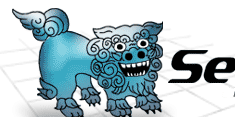 |
 |
|||||
|
Moving on to Seasar by H.Ozawa In our earlier examples, we've seen how using interfaces can make the "Hello World" program flexible. In this page, we'll see how using Seasar can make the program more maintainable.
Content
|
||||||
| Copyright©2005, H.Ozawa and the Seasar Foundation. All rights reserved. |



